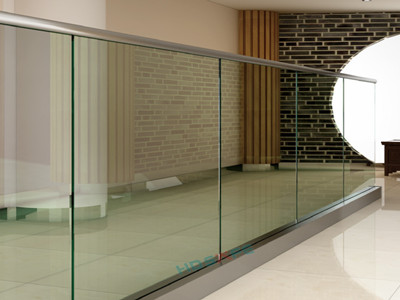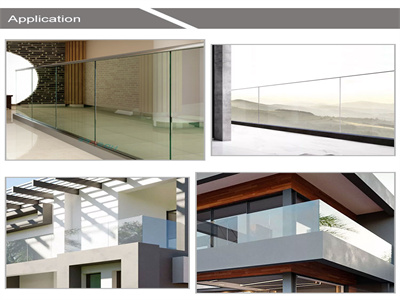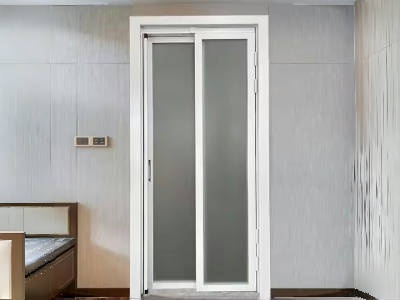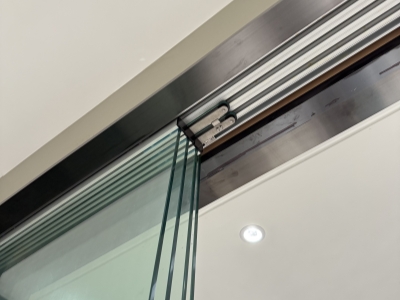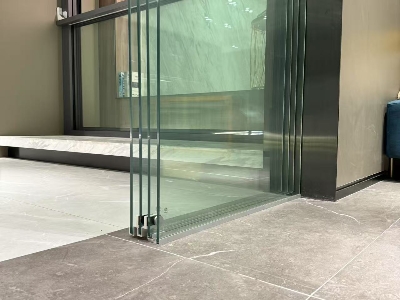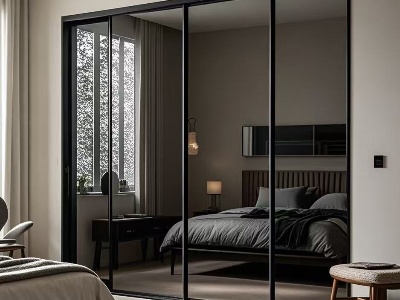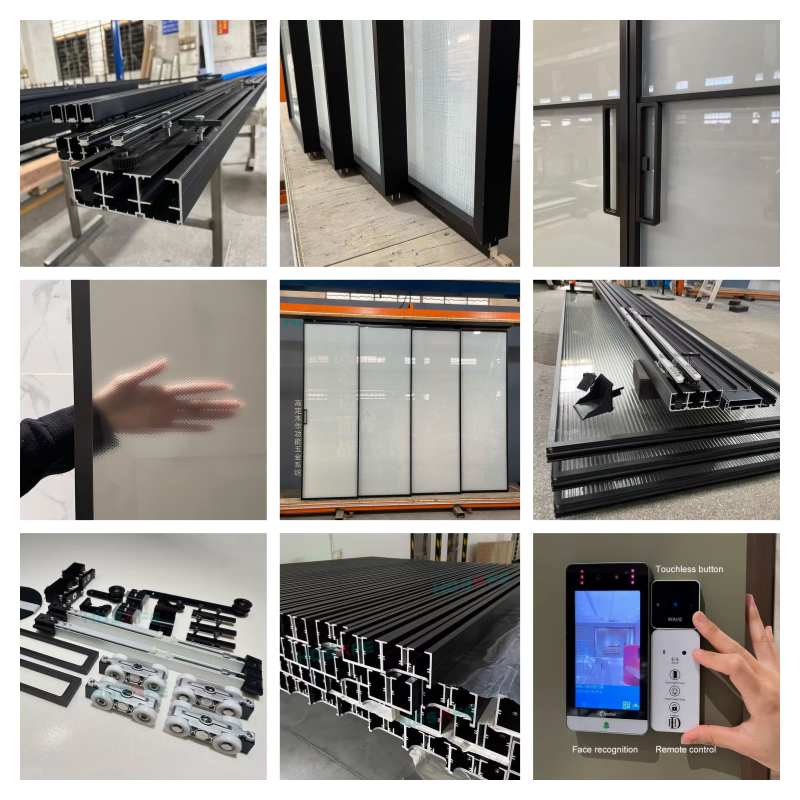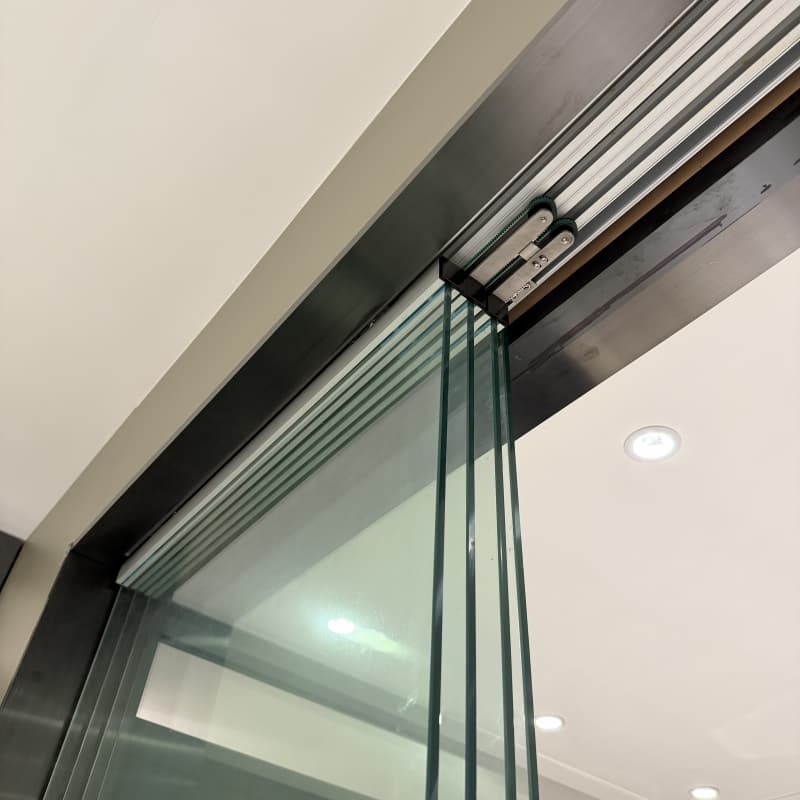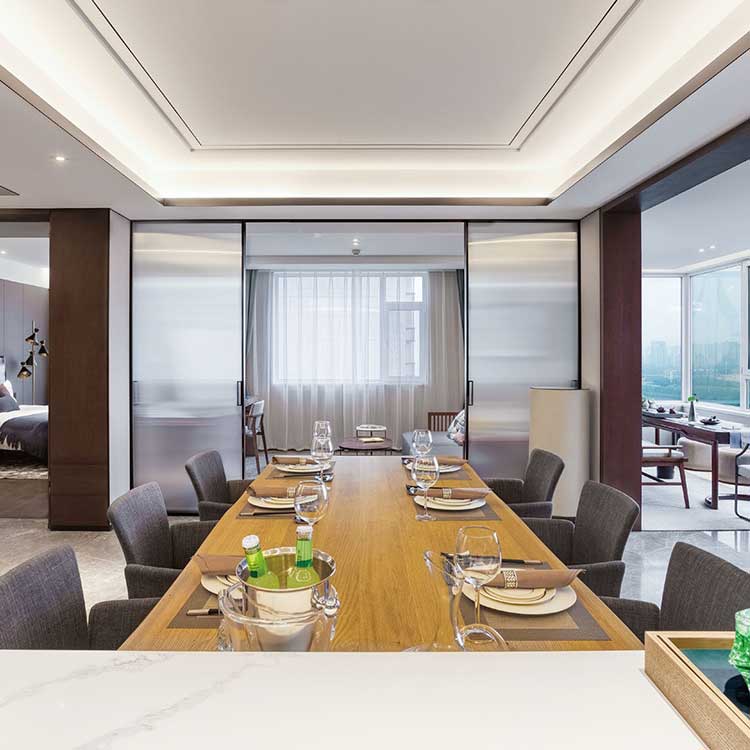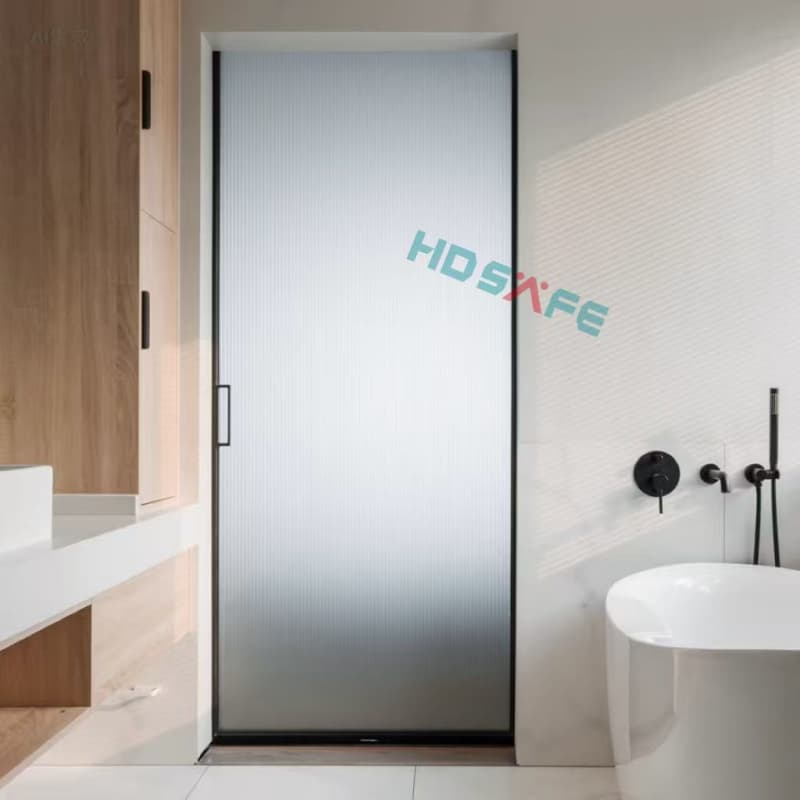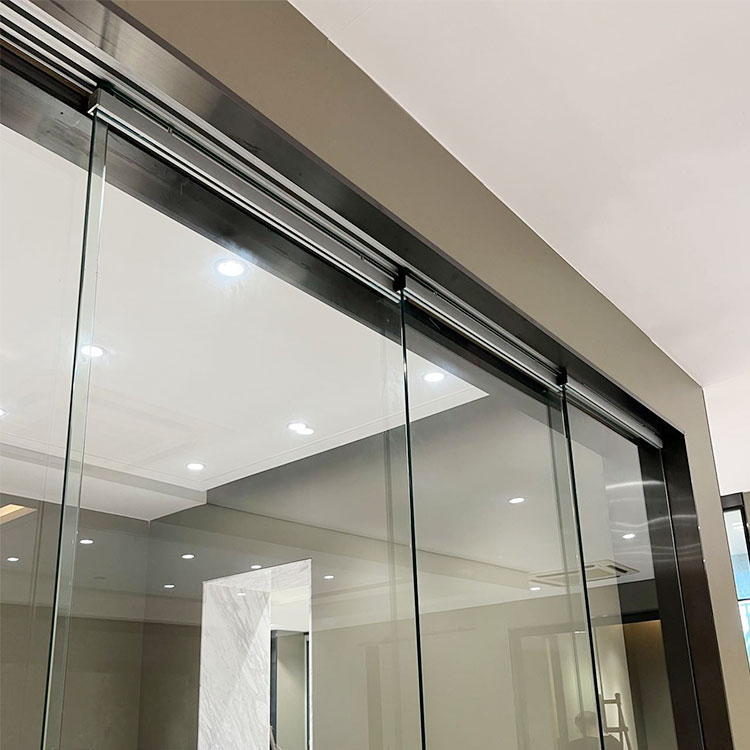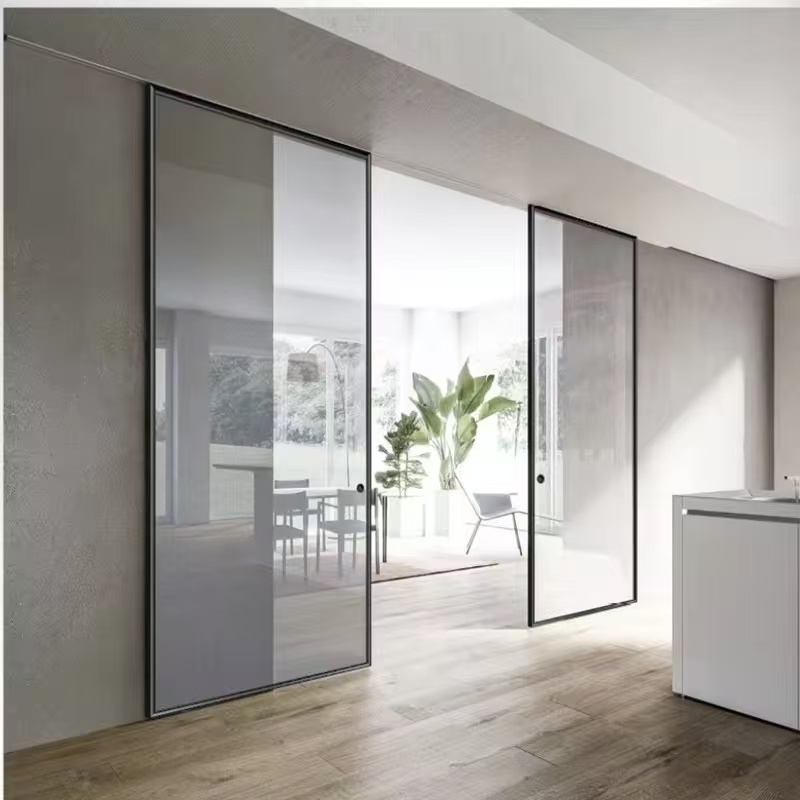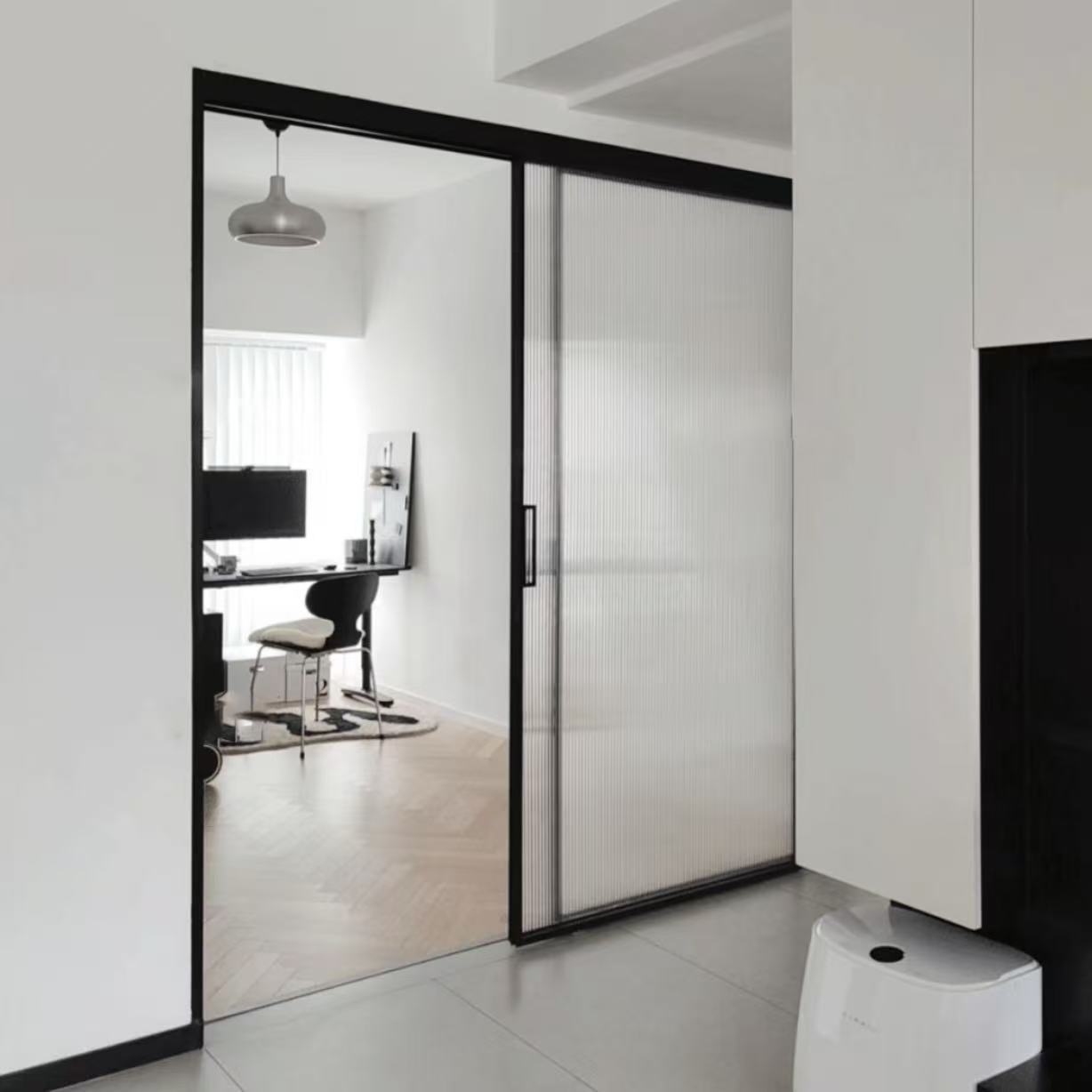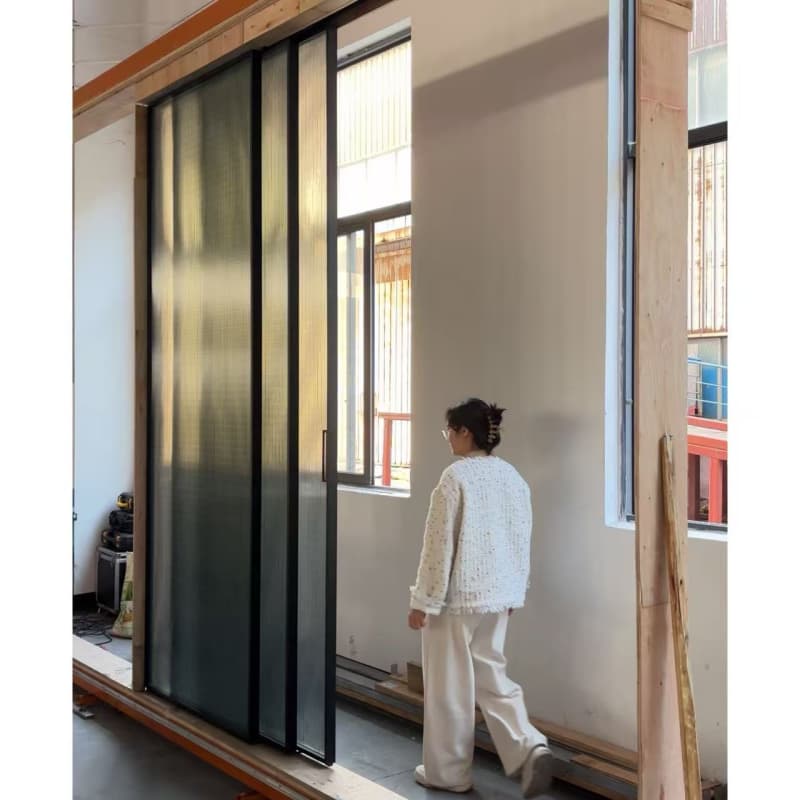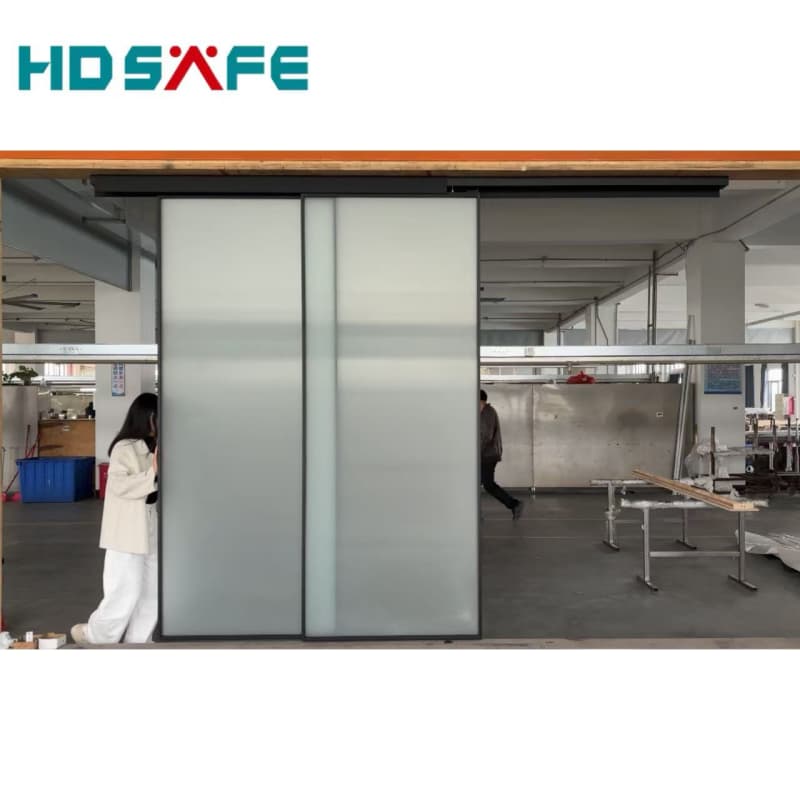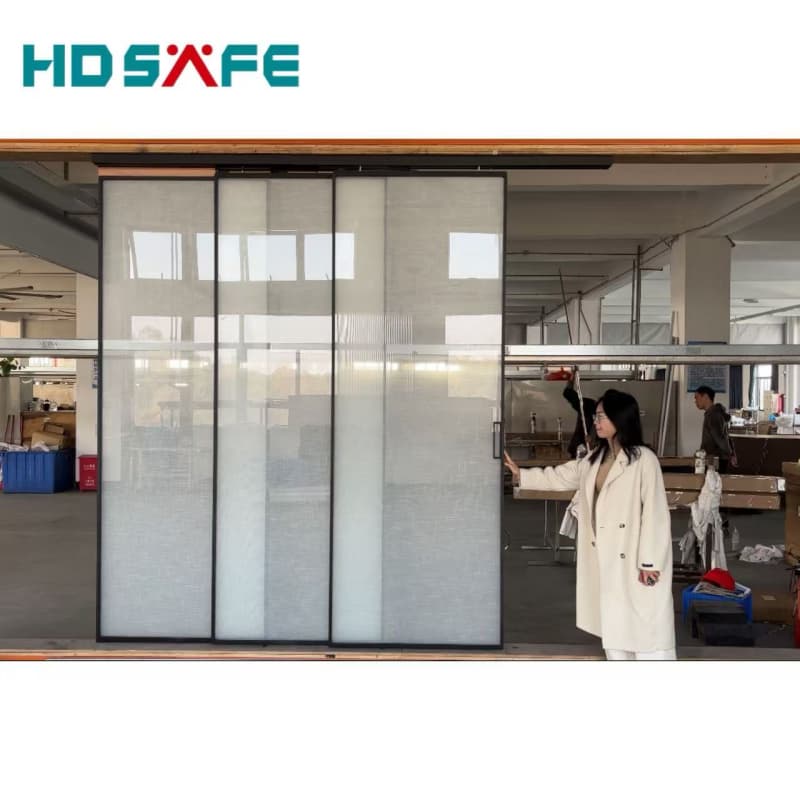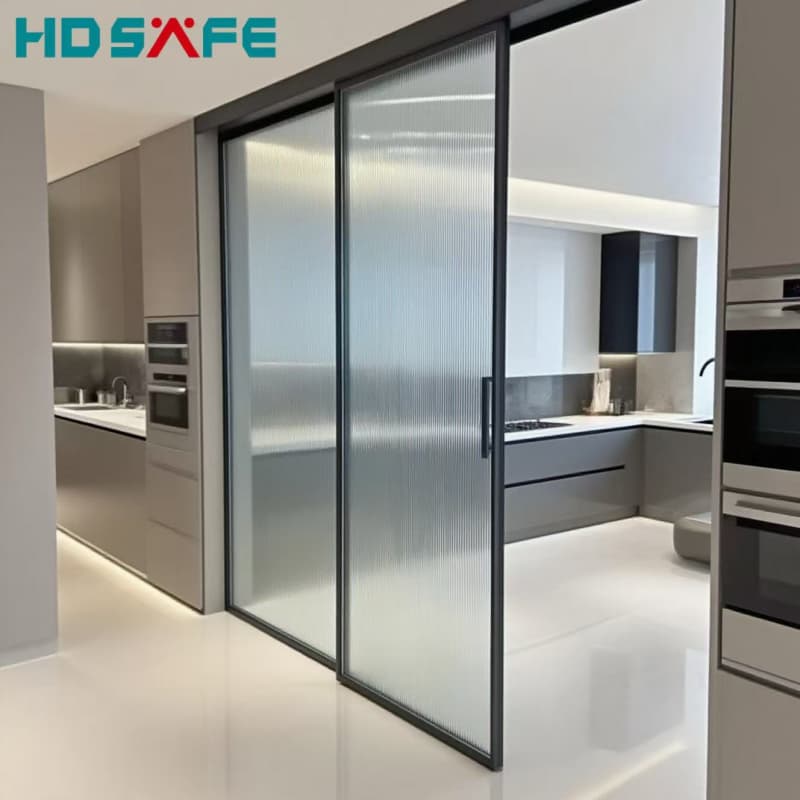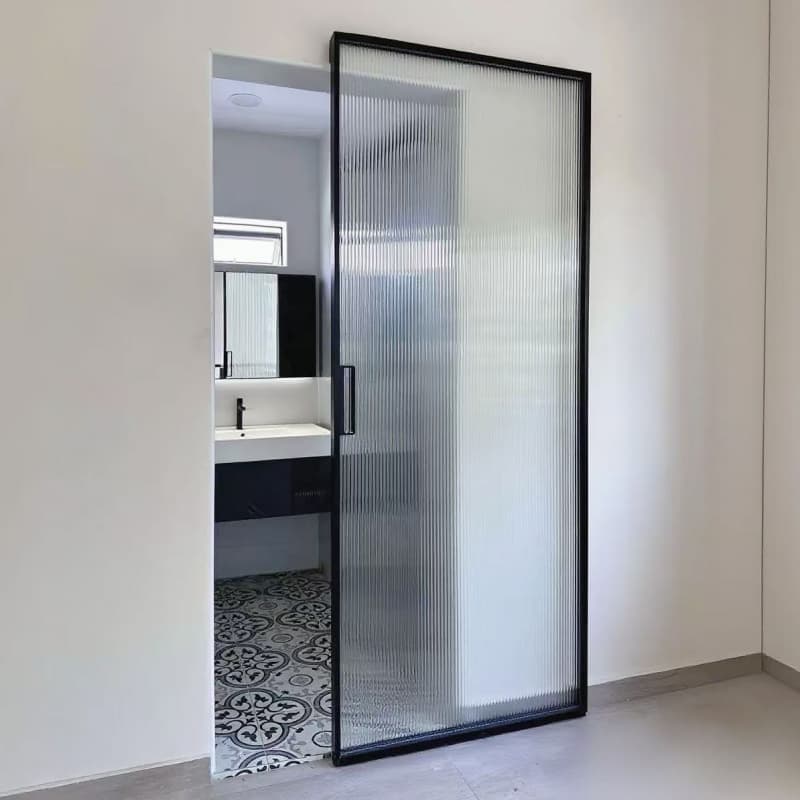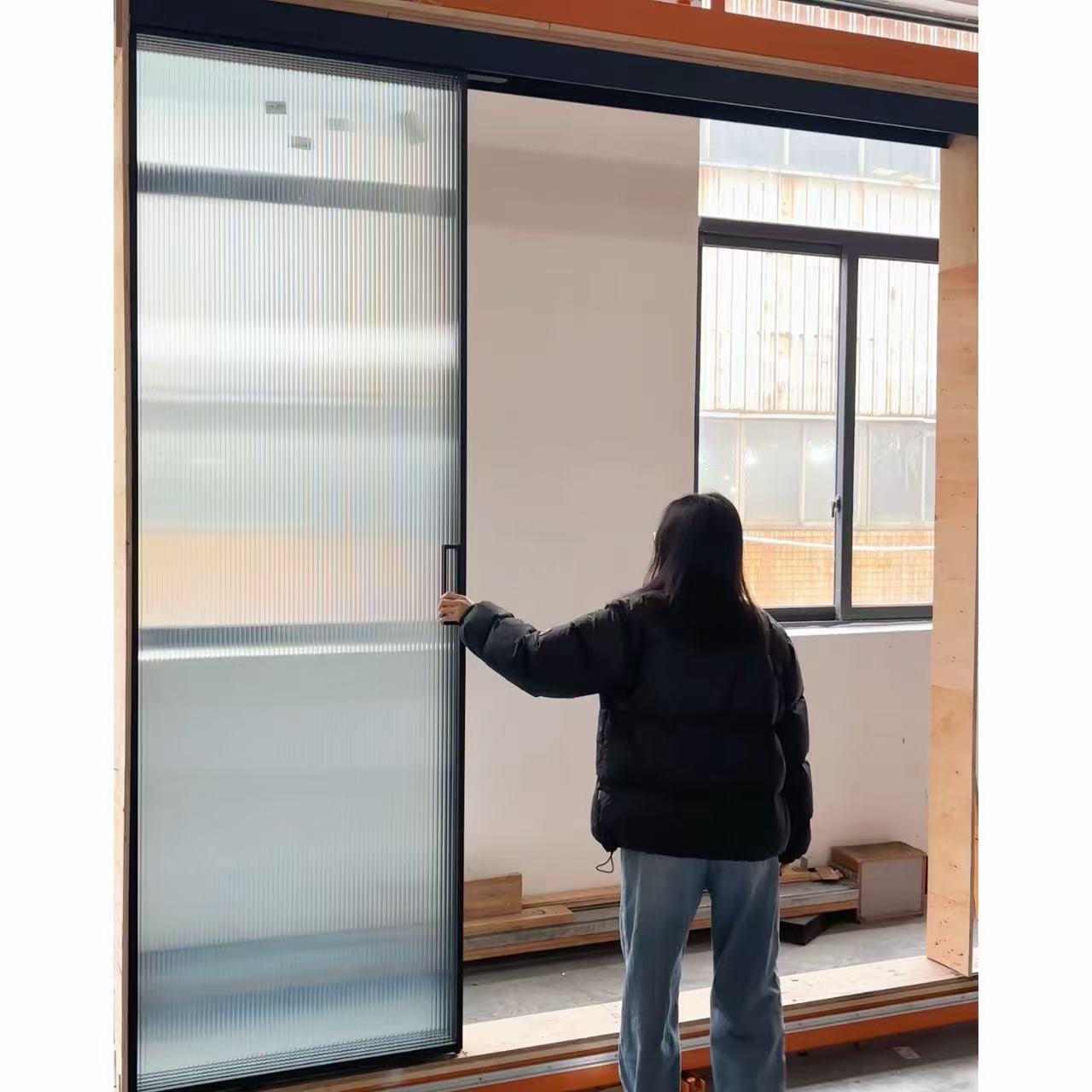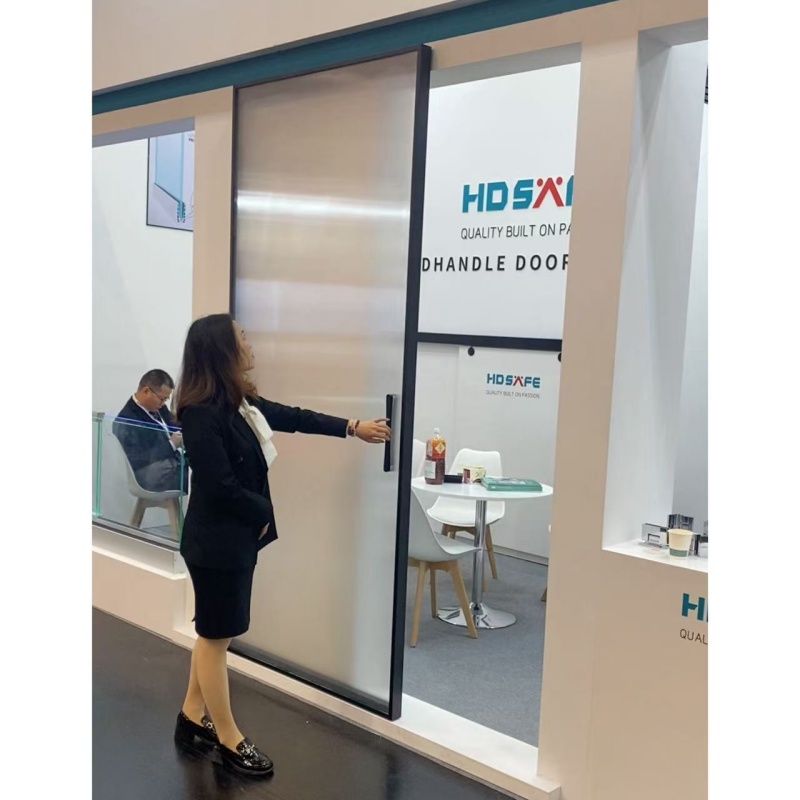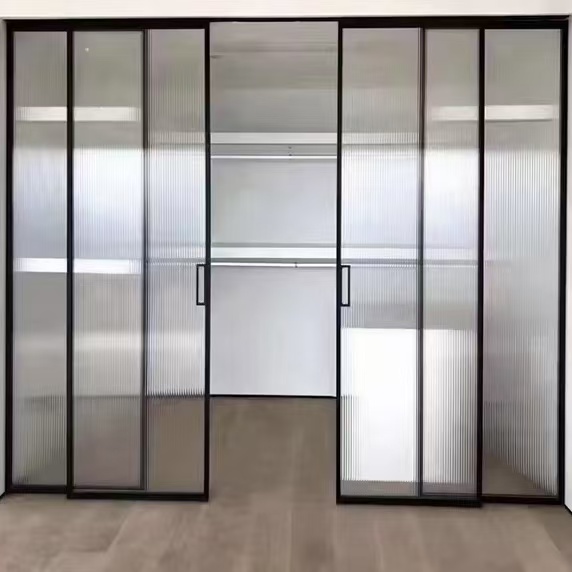Electric Glass Sliding Doors: A Comprehensive Guide
1. Introduction
Electric glass sliding doors have emerged as a pivotal element in contemporary architecture and interior design, seamlessly merging functionality with aesthetic appeal. These doors are not merely functional entry and exit points but are designed to enhance the visual and spatial qualities of any environment. Characterized by their sleek, modern appearance, electric glass sliding doors are typically constructed from tempered or laminated glass panels framed in durable materials such as aluminum. The incorporation of an electric motor allows for effortless operation, which can be controlled via a variety of methods including wall-mounted buttons, remote controls, motion sensors, or even integration with smart home systems. This comprehensive guide delves into the multifaceted world of electric glass sliding doors, exploring their design, functionality, benefits, applications, and future trends.
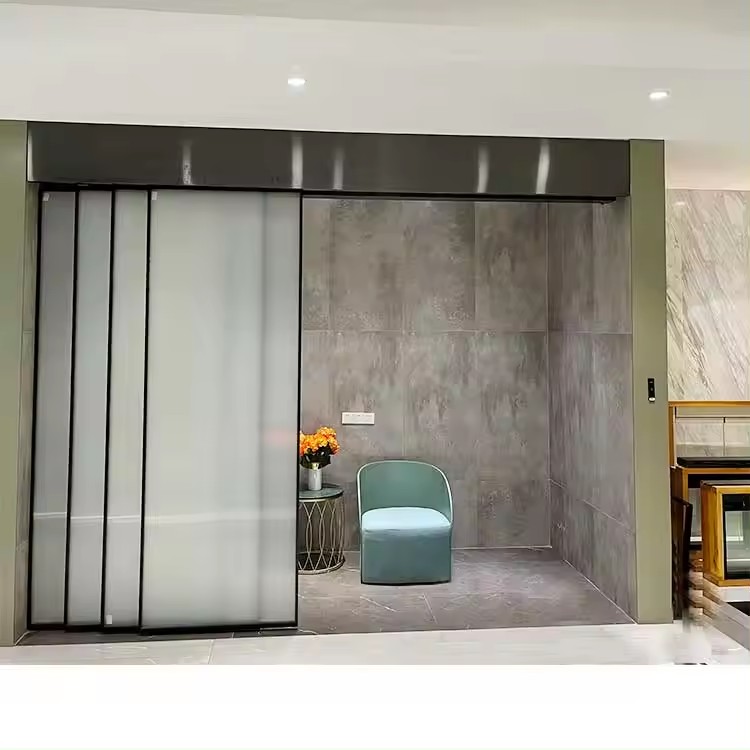
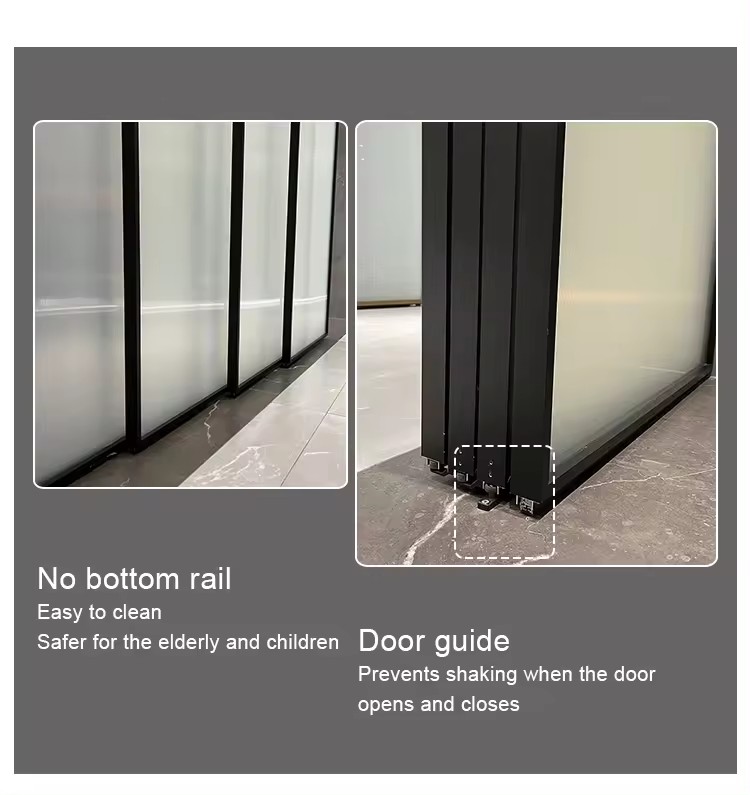
2. Design and Components
2.1 Glass Panels
The glass panels are the most prominent feature of electric glass sliding doors, and their versatility is one of the reasons for their widespread adoption. Glass panels can be customized in various sizes, thicknesses, and types to meet specific requirements. Tempered glass is a popular choice due to its enhanced strength; it is four to five times stronger than regular glass and, in the event of breakage, shatters into small, harmless fragments, significantly reducing the risk of injury. Laminated glass, on the other hand, consists of multiple layers of glass with a plastic interlayer in between. This configuration provides superior security, as the interlayer holds the glass together even if it breaks, and also offers sound insulation properties. Insulated glass, also known as double or triple-pane glass, contains a layer of inert gas, such as argon or krypton, between the panes. This design significantly reduces heat transfer, making it an excellent choice for energy efficiency in both residential and commercial settings.
2.2 Frames
The frames of electric glass sliding doors play a crucial role in the overall structure and functionality of the door. Aluminum frames are the most commonly used due to their lightweight nature, durability, and resistance to corrosion. Aluminum can be easily customized to fit various sizes and shapes, and it can be finished in a wide range of colors and textures, allowing for a seamless integration with the surrounding decor. Other materials, such as wood and steel, can also be used, but they are less common due to their weight and maintenance requirements. The design of the frame is equally important; it must be sturdy enough to support the weight of the glass panels while also providing a smooth and stable track for the door to slide on.
2.3 Tracks and Guides
The tracks and guides are responsible for the smooth movement of the glass panels. They are typically made of aluminum or stainless steel and are designed to provide a stable and secure platform for the door to slide on. The tracks can be either surface-mounted or recessed into the floor or wall, depending on the design and installation requirements. Surface-mounted tracks are more common in residential settings due to their ease of installation and lower cost, while recessed tracks are often used in commercial settings for a cleaner and more seamless look. Some electric glass sliding doors also feature soft-close mechanisms, which ensure that the door closes gently and quietly, preventing any sudden movements or impacts.
2.4 Electric Motors and Control Systems
The electric motor is the heart of the electric glass sliding door system. It is responsible for powering the door and moving the glass panels along the tracks. The motor can be either a geared motor or a belt-driven motor, depending on the size and weight of the door. Geared motors are typically used for heavier doors, as they provide more torque and are more durable. Belt-driven motors, on the other hand, are quieter and more suitable for lighter doors. The control system is used to operate the motor and can be customized to include various features such as motion sensors, remote controls, keypads, and smart home integration. The control system can also be programmed to open and close the door at specific times or in response to certain conditions, such as temperature changes or security breaches.
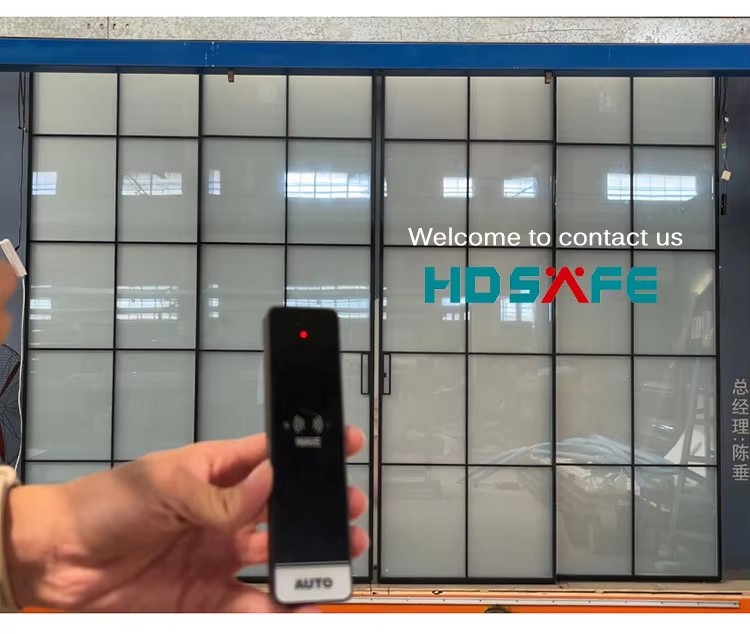
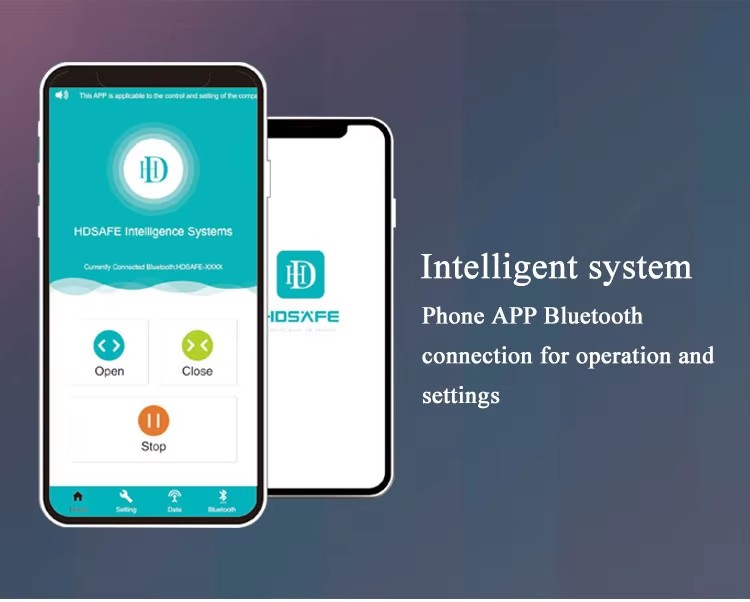

3. Benefits of Electric Glass Sliding Doors
3.1 Aesthetic Appeal
Electric glass sliding doors offer a sleek and modern look that can enhance the overall aesthetic of any space. The transparency of the glass panels allows natural light to flood the room, creating a bright and airy atmosphere. The minimalist design of the doors also helps to create a sense of openness and spaciousness, making the space feel larger and more inviting. The ability to customize the glass panels with various finishes, such as frosted, tinted, or patterned glass, allows for a high degree of personalization and can add a touch of style and personality to the space.
3.2 Energy Efficiency
One of the key advantages of electric glass sliding doors is their energy efficiency. The use of insulated glass panels can significantly reduce heat transfer between the inside and outside of the building, helping to keep the interior comfortable and reducing energy consumption. In addition, the soft-close mechanism of the doors helps to prevent air leaks, which can further improve energy efficiency. By reducing the amount of energy needed to heat and cool the building, electric glass sliding doors can help to lower utility bills and reduce the carbon footprint of the building. The use of materials such as low-emissivity (Low-E) coatings on the glass can also enhance energy efficiency by reflecting heat back into the room during the winter and keeping it out during the summer.
3.3 Enhanced Security
Electric glass sliding doors can also provide enhanced security for your home or business. The use of tempered or laminated glass panels makes the doors more resistant to breakage and intrusion. The frames are also designed to be sturdy and durable, providing an additional layer of security. Additionally, many electric glass sliding doors are equipped with advanced security features such as keyless entry, biometric scanners, and alarm systems. These features can help to prevent unauthorized access to the building and provide peace of mind for homeowners and business owners. The integration of surveillance cameras and motion sensors with the door system can also enhance security by providing real-time monitoring and alerts in case of any suspicious activity.
3.4 Easy Accessibility
Electric glass sliding doors are highly accessible and user-friendly. The touch-free operation of the doors makes them ideal for people with disabilities, elderly individuals, and those carrying heavy loads. The automatic opening and closing of the doors eliminate the need for physical effort, making it easier and more convenient for everyone to enter and exit the building. Additionally, the doors can be customized with features such as ramps and handrails to improve accessibility for people with mobility issues. The use of voice-activated controls and smart home integration can also enhance accessibility for people with disabilities by allowing them to control the door with simple voice commands.
3.5 Space-Saving Design
Electric glass sliding doors are a space-saving solution that can help to maximize the usable space in your home or business. Unlike traditional swinging doors, which require a significant amount of space to open and close, electric glass sliding doors move horizontally along a track, requiring very little space. This makes them ideal for small apartments, offices, and retail spaces where space is at a premium. The slim profile of the doors also helps to create a more open and spacious feel in the room, making it appear larger and more inviting. The ability to stack the doors when fully open also allows for unobstructed access to the space, making it easier to move furniture and other items in and out of the room.
3.6 Customization Options
Electric glass sliding doors offer a wide range of customization options to suit the specific needs and preferences of the user. The glass panels can be customized in terms of size, thickness, type of glass, and finish. The aluminum frames can be customized in terms of color, texture, and design. The control system can be customized to include various features such as motion sensors, remote controls, keypads, and smart home integration. This allows users to create a unique and personalized door system that fits their specific requirements and style. The ability to customize the door system also allows for integration with other building systems, such as HVAC and lighting, to create a more efficient and comfortable environment.
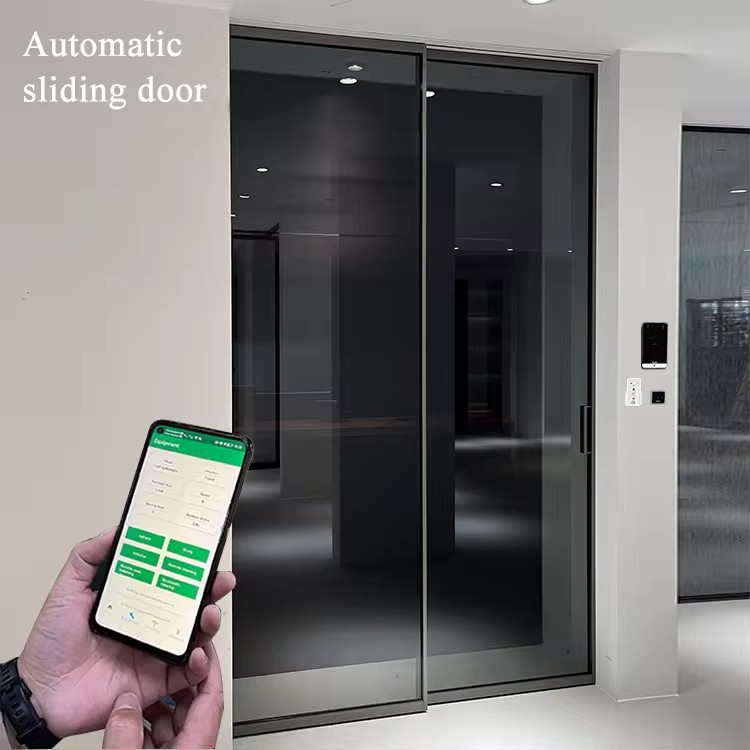
4. Types of Electric Glass Sliding Doors
4.1 Single-Panel Electric Glass Sliding Doors
Single-panel electric glass sliding doors consist of a single glass panel that slides horizontally along a track. They are ideal for small spaces such as closets, bathrooms, and entryways. Single-panel doors are simple in design and easy to operate, making them a popular choice for residential and light commercial applications. The ability to customize the glass panel with various finishes and features allows for a high degree of personalization and can enhance the overall aesthetic of the space.
4.2 Bi-Parting Electric Glass Sliding Doors
Bi-parting electric glass sliding doors consist of two glass panels that slide horizontally in opposite directions along a track. They are ideal for larger openings such as storefronts, conference rooms, and atriums. Bi-parting doors provide a wide opening, allowing for easy access and egress, and can be customized with various features such as automatic stacking and soft-close mechanisms. The ability to open both panels simultaneously can also help to improve ventilation and airflow in the space.
4.3 Multi-Panel Electric Glass Sliding Doors
Multi-panel electric glass sliding doors consist of three or more glass panels that slide horizontally along a track. They are ideal for creating a seamless and continuous flow between indoor and outdoor spaces, such as patios, decks, and courtyards. Multi-panel doors can be customized to fit different configurations and can be equipped with various features such as weatherproofing, insulation, and safety sensors. The ability to stack the panels when fully open also allows for unobstructed access to the space, making it easier to move furniture and other items in and out of the room.
4.4 Pocket Electric Glass Sliding Doors
Pocket electric glass sliding doors are designed to slide into a pocket or cavity in the wall when opened. They are ideal for creating a clean and modern look in spaces where a traditional door.





 Home
Home May 19,2025
May 19,2025 
 Electric Glass Sliding Doors: A Comprehensive Guide 2
Electric Glass Sliding Doors: A Comprehensive Guide 2 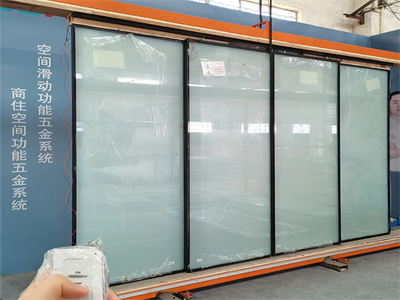
 Mar 05,2025
Mar 05,2025 
